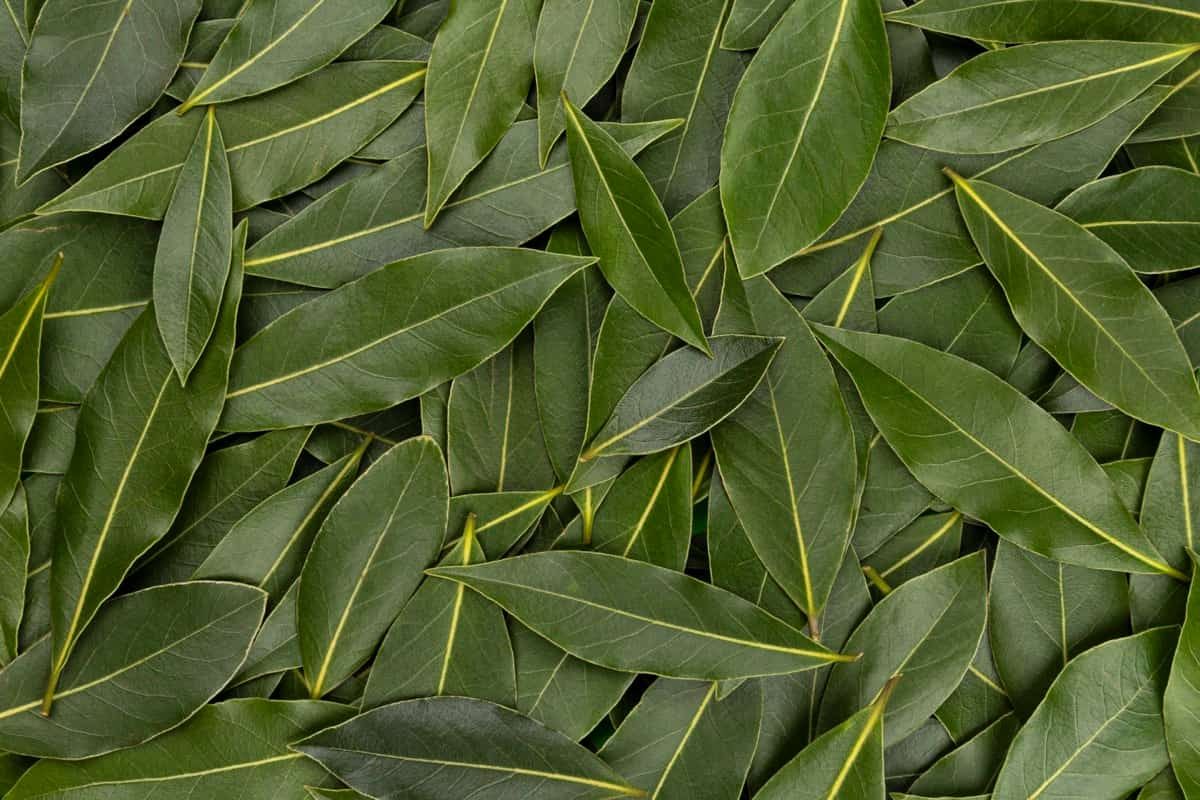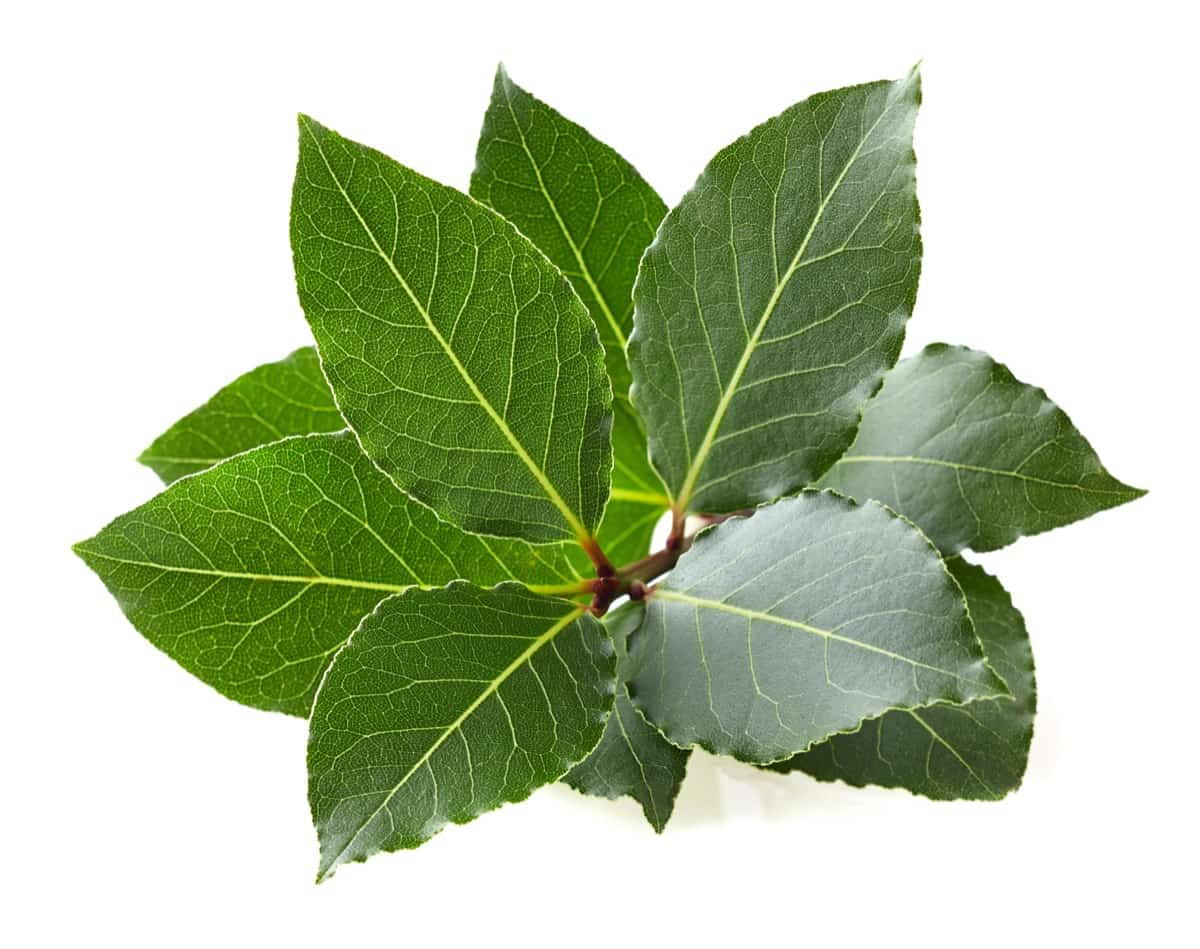Brown spots on bay tree leaves can cause concern among gardeners and plant enthusiasts. These unsightly spots not only affect the tree’s aesthetic appeal but can also indicate underlying issues that need to be addressed. This article will explore the causes of brown spots on bay tree leaves and learn how to treat brown spots on bay tree leaves naturally.

How to Treat Brown Spots on Bay Tree Leaves
Causes of Brown Spots on Bay Tree Leaves
- Fungi such as Cercospora spp., Colletotrichum spp., and Phytophthora spp. can infect the leaves, resulting in brown spots. These infections can occur due to excessive moisture, poor air circulation, or improper watering practices.
- Bacteria like Pseudomonas syringae and Xanthomonas campestris can infect the leaves and cause brown spots. These infections often occur when the tree is stressed or weakened.
- Exposure to extreme temperatures, drought, or excessive sunlight can cause leaf discoloration and the formation of brown spots.
- Deficiencies in nutrients such as nitrogen, potassium, or magnesium can lead to leaf discoloration and the formation of brown spots.
- Common pests like aphids, spider mites, and scale insects feed on the leaves, leading to discoloration and the development of brown spots.
Natural Treatments for Treating Brown Spots on Bay Tree Leaves
- Overwatering leads to root rot and other issues, so avoid it. Water the tree deeply but infrequently to maintain the right moisture balance.
- If you notice severely affected leaves with brown spots, it’s essential to prune them. Dispose of the pruned leaves away from the tree to prevent reinfection.
- Consider providing shade to your tree during the hottest part of the day, especially during summer. This can help protect the leaves from sunburn and reduce the occurrence of brown spots.
- Apply an organic mulch layer around the base of your bay tree. This will help retain moisture, regulate soil temperature, and prevent weed growth.
Neem Oil Spray for Brown Spots on Bay Tree Leaves
- Mix neem oil with water according to the manufacturer’s instructions. Typically, a 1% to 2% neem oil solution is recommended for foliar spray applications.
- Pour the diluted neem oil solution into a clean spray bottle. Ensure the bottle has a fine mist setting for better coverage.
- Spray the affected bay tree leaves thoroughly, covering both the upper and lower surfaces. Pay close attention to the areas with brown spots.
In case you missed it: 9 Causes of Dying Bay Leaf Tree and How to Fix It?

Baking Soda Solution for Treating Brown Spots on Bay Tree Leaves
- Mix one tablespoon of baking soda in four liters of water in a container until completely dissolved.
- Once the solution is ready, transfer it into a spray bottle for easy application.
- Spray this baking soda solution onto the affected leaves. Ensure that the solution covers the leaves top and bottom surfaces.
Chamomile Tea Spray for Brown Spots on Bay Tree Leaves
- Boil the 2 cups of water in a pot. Once the water has come to a boil, remove it from the heat and add four chamomile tea bags. Soak the tea bags steeply in hot water for about 10 minutes.
- After that, remove the tea bags from the pot and let the chamomile tea cool completely.
- Transfer the cooled chamomile tea into a clean spray bottle.
- Before spraying your bay tree leaves, thoroughly clean the affected areas by gently wiping them with a damp cloth.
- Spray the chamomile tea directly onto the brown spots. Be sure to cover the entire affected area.
Milk Spray for Treating Brown Spots on Bay Tree Leaves
- Mix 1 cup of milk and three cups of water in a spray bottle. Shake well to ensure they are thoroughly combined.
- Choose a time to spray when the bay tree is not in direct sunlight, preferably in the early morning or late afternoon.
- Spray the milk mixture evenly on the affected bay tree leaves, covering both sides of the leaves. Pay special attention to areas with brown spots.
- Allow the milk spray to air dry on the leaves. Avoid rinsing it off, as this will reduce its effectiveness.
- Repeat the milk spray application every 7-10 days until the brown spots fade, and new, healthy growth appears.
Garlic Spray for Brown Spots on Bay Tree Leaves
- Blend the garlic cloves of 2-3 whole bulbs and 3 cups of water mixture until it forms a smooth, liquid consistency.
- By using a fine-mesh strainer, separate the liquid from the garlic pieces. This will create garlic-infused water.
- Transfer the garlic-infused water into a spray bottle. Make sure to label the bottle to avoid any confusion.
- Spray the garlic solution onto the affected bay tree leaves, covering the entire surface, including the tops and bottoms of the leaves.
Dish Soap and Water Mixture for Treating Brown Spots on Bay Tree Leaves
- You will need mild dish soap and water to create the mixture. Use a mild dish soap to avoid harsh chemicals that could harm the leaves.
- Mix 3-4 tablespoons of dish soap with 4 liters of water. Stir the mixture gently until the soap is well-dissolved. Maintain the right ratio of soap to water to ensure the solution is not too concentrated.
- Once the mixture is ready to use, transfer it to a spray bottle for easy application. Make sure to coat the affected bay tree thoroughly leaves with the solution. Pay close attention to the brown spots, as they are the areas that require treatment.
In case you missed it: Frequently Asked Questions About Bay Leaf Farming

Preventing Brown Spots on Bay Tree Leaves Naturally
- Regularly check the soil’s moisture level and water the tree deeply when the top inch of soil feels dry. Avoid overwatering that lead to root rot and subsequent leaf browning.
- Ensuring proper soil drainage prevents brown spots on bay tree leaves. If your soil has poor drainage, consider amending it with organic matter such as compost or sand to improve drainage.
- Organic fertilizers or compost can be applied in early spring to provide nutrients. Avoid over-fertilizing, as it can lead to nutrient burn and leaf browning.
- Regularly inspect your tree for signs of pests and take appropriate measures to control them. Natural pest control methods like introducing beneficial insects or using insecticidal soaps can effectively prevent infestations.
Organic Fertilizers for Preventing Nutrient Deficiencies in Bay Tree
Different organic fertilizers provide specific nutrients to address nutrient deficiencies in plants. For example, animal manure is rich in nitrogen, phosphorus, and potassium, essential for plant growth. Compost, on the other hand, is a well-balanced organic fertilizer that provides a wide range of nutrients, including micronutrients necessary for healthy plant development.
Another organic fertilizer option is bone meal, which is high in phosphorus. This is particularly beneficial for plants that require an extra boost of phosphorus, such as flowering plants and fruit trees. On the other hand, blood meal is rich in nitrogen and is ideal for promoting leafy growth in plants.
In case you missed it: How to Grow and Care for Organic Licorice: Guide for Planting to Harvesting

Seaweed and fish emulsion are organic fertilizers packed with micronutrients like iron, zinc, and manganese. These micronutrients are essential for various plant functions, including photosynthesis and enzyme activities. These micronutrients, seaweed, and fish emulsion helps prevent nutrient deficiencies and promote plant health.
Conclusion
Remember to monitor your bay tree closely and maintain a regular care routine to prevent brown spots from recurring. By following these effective organic home remedies, you can treat brown spots on bay tree leaves naturally and ensure your tree’s overall health and beauty.
- Feed Your Flock for Less: Top 10 Tips to Save on Chicken Feed
- Ultimate Guide to Ossabaw Island Hog: Breeding, Raising, Diet, and Care
- Hatching Answers: The Top 10 Reasons Your Chickens Aren’t Laying Eggs
- Eggs and Economics: Breaking Down the Cost of Raising Backyard Chickens
- Defend Your Greens: Proven Methods to Keep Iguanas Out of Your Garden
- Ultimate Guide to Cinnamon Queen Chicken: A Comprehensive Guide for Beginners
- Ultimate Guide to California Tan Chicken: Breeding, Raising, Diet, Egg-Production and Care
- Ultimate Guide to Marsh Daisy Chicken: Breeding, Raising, Diet, and Care
- 10 Types of Chicken Farming Businesses You Can Start for Profits
=